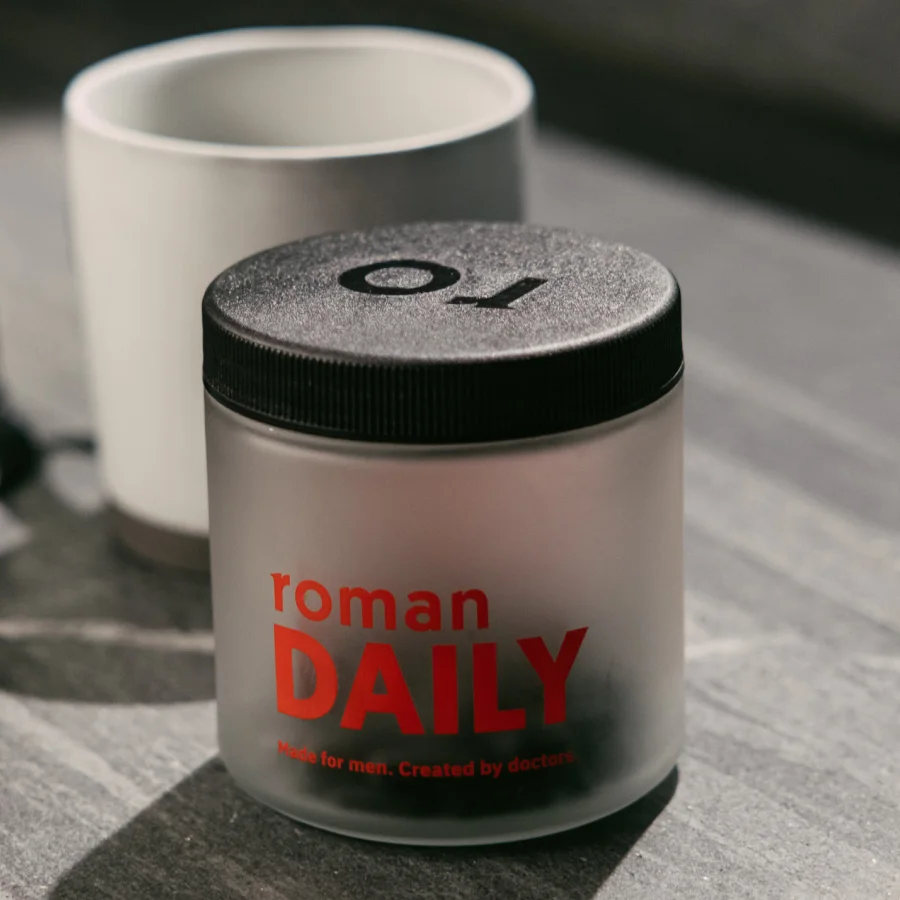Here's what we'll cover
Here's what we'll cover
Supplements should be a simple way to make up for vitamins or minerals you’re missing from your diet. But choosing the right supplement can be tricky—if you need one at all.
Roughly 50% of the global population doesn’t get enough of this vitamin (Sizar, 2020). If you’re looking for a vitamin D supplement (or suspect you might need one), you may have come across liquid vitamin D.
Here’s what you need to know about liquid vitamin D and how it compares to other ways of getting your recommended daily allowance of this essential vitamin.
What’s the difference between liquid vitamin D and other forms of supplements?
Vitamin D, like vitamins A, E, and K, is a fat-soluble vitamin. Manufacturers can therefore dissolve the vitamin in oil to create a liquid form. Many companies use MCT oil, which is made from coconuts, or other options like palm kernel oil.
Each brand will have guidance in terms of how much you need to take. It’s usually measured in drops, so make sure to read the label to figure out how much you need and how often you need to take them.
Research on how vitamin D drops compare to tablets is limited, but research suggests they’re equally effective at raising vitamin D levels in the body (Frankling, 2020).
Does liquid vitamin D have any side effects?
The biggest risk of vitamin D drops is taking too many. If you follow the guidelines on product packaging and instructions from a healthcare provider, you should remain well within the range of normal dosing. While overdosing on vitamin D is unlikely, it is possible (Auguste, 2019). Make sure to stick with your recommended daily allowance.
Since vitamin D plays an important role in helping your body absorb calcium, taking too much vitamin D can also cause high calcium levels, leading to symptoms like confusion, constipation, excessive thirst, and frequent urination (Chauhaun, 2020).
Why is vitamin D so important?
Vitamin D is involved in everything from regulating your heartbeat to supporting your immune system.
Vitamin D also helps your body absorb crucial nutrients like calcium, magnesium, and phosphate (Uwitonze, 2018). One of the most essential roles vitamin D plays is supporting bone health. Vitamin D deficiencies can cause rickets, a condition in children that weakens bones and stunts growth (Chauhan, 2021).
In adults, a vitamin D deficiency can result in osteomalacia, which softens bones and increases the risk of fractures. Vitamin D deficiency can also cause side effects such as bone pain and tenderness, muscle weakness, fracture, and difficulty walking (Sizar, 2020).
How do I know if I need a vitamin D supplement?
Having healthy vitamin D levels is important, but that doesn’t mean you should take a supplement to give you a boost when your levels are normal.
Supplements should be used by people who have a deficiency and need to correct low levels. If you suspect you might not be getting enough vitamin D, a simple blood test can confirm it.
Most people get enough vitamin D from their diet. If you eat foods rich in vitamin D—some examples include oily fish, egg yolks, mushrooms, and fortified foods like orange juice and milk—you may be getting enough.
It may be nicknamed the sunshine vitamin, but relying on sunlight isn’t the best way to get vitamin D. That’s because exposure to ultraviolet rays also increases the risk of developing skin cancer. Plus, humans generally spend a lot more time indoors than in the past. We also can’t make vitamin D while wearing sunscreen, and there’s no safe amount of sun exposure without sunscreen protection.
How to choose a vitamin D supplement
If you’re vitamin D deficient, supplements can be a good option.
There are two forms of vitamin D supplements: D2 and D3. Vitamin D3 is better at raising levels in the blood. However, both forms are effective and easily absorbed by the body. While many D3 supplements (including liquid vitamin D3) are made with sheep’s wool, there are options on the market made from algae, fungi, and yeast, which are all vegan-friendly (NIH, 2020).
Some liquid vitamin D supplements are combined with another fat-soluble vitamin, such as vitamin K. Whether it’s liquid vitamin D, gummies, or tablets, choose the type of supplement that you think you’ll take most consistently. Vitamin D drops are more accessible or appealing to take for certain people, which means they’re likely to take it more consistently (Frankling, 2020). Remember that the U.S. Food and Drug Administration (FDA) has different standards for supplements than prescription drugs, so it's important to buy from a company you trust.
DISCLAIMER
If you have any medical questions or concerns, please talk to your healthcare provider. The articles on Health Guide are underpinned by peer-reviewed research and information drawn from medical societies and governmental agencies. However, they are not a substitute for professional medical advice, diagnosis, or treatment.
Anderson JL, May HT, Horne BD, et al. Relation of vitamin D deficiency to cardiovascular risk factors, disease status, and incident events in a general healthcare population. The American Journal of Cardiology, 106 (7):963-968. doi:10.1016/j.amjcard.2010.05.027. Retrieved from https://pubmed.ncbi.nlm.nih.gov/20854958/
Auguste, B. L., Avila-Casado, C., & Bargman, J. M. (2019). Use of vitamin d drops leading to kidney failure in a 54-year-old man. Canadian Medical Association Journal, 191 (14), E390-E394. doi:10.1503/cmaj.180465. Retrieved from https://www.cmaj.ca/content/191/14/E390.short
Baaij, J. H. F. D., Hoenderop, J. G. J., & Bindels, R. J. M. (2015). Magnesium in Man: Implications for Health and Disease. Physiological Reviews, 95 (1), 1–46. doi: 10.1152/physrev.00012.2014. https://www.ncbi.nlm.nih.gov/pubmed/25540137
Chauhaun, K., Shahrokhi, M., Huecker, M. R. (2020). Vitamin D. StatPearls Publishing. Treasure Island, FL. https://www.ncbi.nlm.nih.gov/books/NBK441912/
Frankling, M. H., Norlin, A., Hansen, S., Wahren Borgström, E., Bergman, P., & Björkhem-Bergman, L. (2020). Are vitamin d3 tablets and oil drops equally effective in raising s-25-hydroxyvitamin d concentrations? A post-hoc analysis of an observational study on immunodeficient patients. Nutrients,12 (5), 1230. doi:10.3390/nu12051230. Retrieved from https://www.mdpi.com/2072-6643/12/5/1230
Holick MF. Vitamin D deficiency. New England Journal of Medicine, 357 (3), 266-281. doi:10.1056/NEJMra070553. Retrieved from https://pubmed.ncbi.nlm.nih.gov/17634462/
Jakobsen, J., Smith, C., Bysted, A., & Cashman, K. D. (2019). Vitamin D in wild and FARMED Atlantic SALMON (SALMO Salar)—What do we know? Nutrients, 11 (5), 982. doi:10.3390/nu11050982. Retrieved from https://www.mdpi.com/2072-6643/11/5/982
National Institutes of Health (NIH). (2020, October 9). Office of dietary supplements - vitamin d. Retrieved February 26, 2021, from https://ods.od.nih.gov/factsheets/Vitamin%20D-HealthProfessional/
Nowak A, Boesch L, Andres E, et al. Effect of vitamin D3 on self-perceived fatigue: A double-blind randomized placebo-controlled trial [published correction appears in Medicine (Baltimore). 2017 Jan 20;96(3):e6038]. Medicine (Baltimore). 2016;95(52):e5353. doi:10.1097/MD.0000000000005353. Retrieved from https://www.ncbi.nlm.nih.gov/pmc/articles/PMC5207540/
Rafiq, R., Walschot, F., Lips, P., Lamb, H., de Roos, A., Rosendaal, F., … de Mutsert, R. (2018). Larger waistlines are linked to higher risk of vitamin D deficiency. European Society of Endocrinology . Retrieved from https://www.eurekalert.org/pub_releases/2018-05/esoe-lwa051718.php
Sizar, O., Khare, S., Goyal, A., Bansal, P., & Givler, A. (2021, Jan. 3). Vitamin D Deficiency. StatPearls Publishing. Treasure Island, FL. https://www.ncbi.nlm.nih.gov/books/NBK532266/
Uwitonze, A. M., & Razzaque, M. S. (2018). Role of magnesium in vitamin d activation and function. The Journal of the American Osteopathic Association, 118 (3), 181-189. doi:10.7556/jaoa.2018.037. Retrieved from https://jaoa.org/article.aspx?articleid=2673882
Van Ballegooijen AJ, Pilz S, Tomaschitz A, Grübler MR, Verheyen N. (2017). The Synergistic Interplay between Vitamins D and K for Bone and Cardiovascular Health: A Narrative Review. International Journal of Endocrinology . doi:10.1155/2017/7454376. Retrieved from https://www.ncbi.nlm.nih.gov/pmc/articles/PMC5613455/










